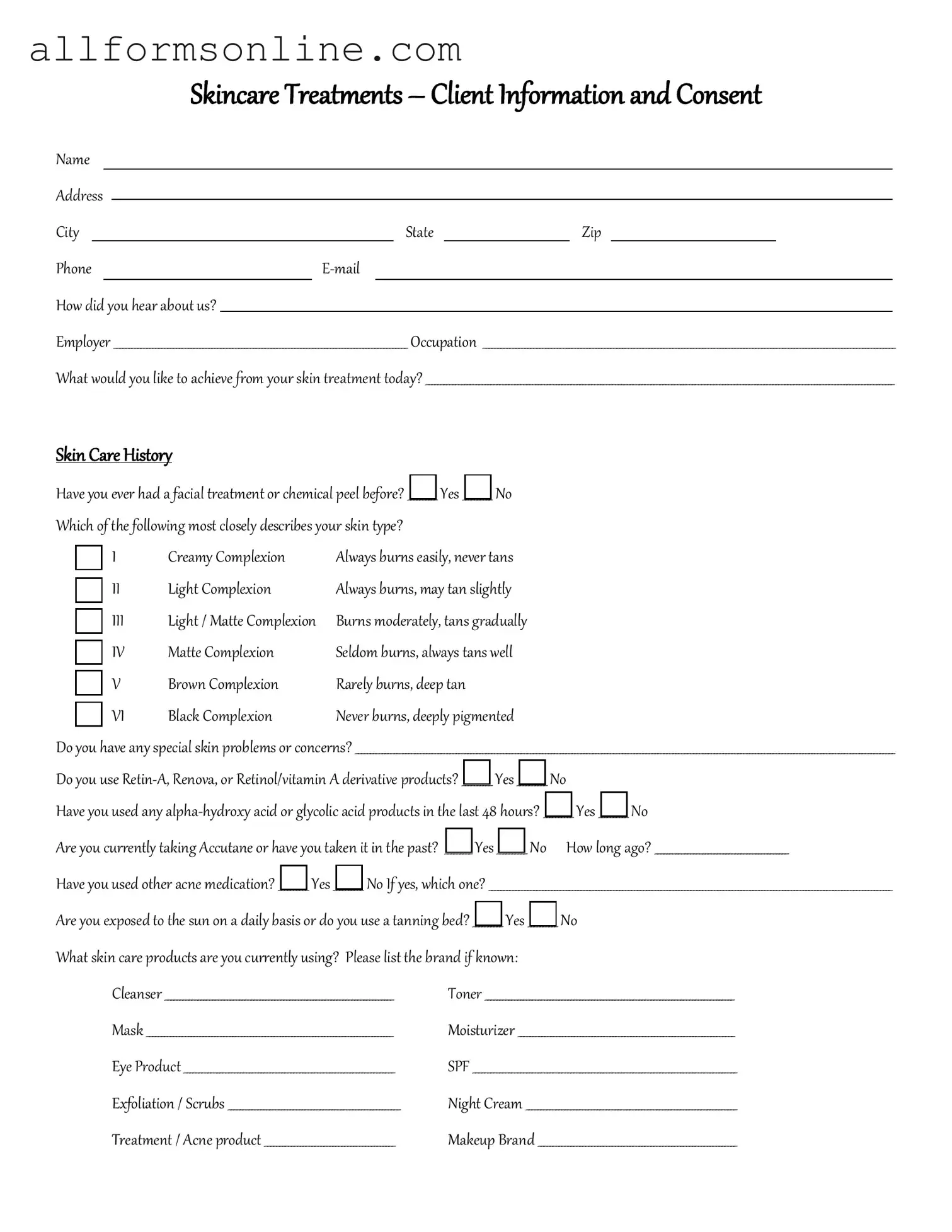What is a Facial Consent form?
A Facial Consent form is a document that clients sign before receiving facial treatments. It serves to inform clients about the procedure, potential risks, and expected outcomes. By signing this form, clients acknowledge that they understand the treatment process and agree to proceed. This form is crucial for both the client and the service provider, as it helps ensure that everyone is on the same page regarding the treatment being provided.
Why is it important to sign a Facial Consent form?
Signing a Facial Consent form is vital for several reasons. First, it protects the client by ensuring they are aware of any risks associated with the treatment. Second, it protects the service provider legally, as it provides evidence that the client has been informed and has consented to the procedure. This mutual understanding fosters trust and transparency in the client-provider relationship. Moreover, it can help prevent misunderstandings or disputes about the treatment in the future.
What information is typically included in a Facial Consent form?
A Facial Consent form usually includes several key pieces of information. It outlines the specific facial treatment being performed, any potential side effects, and contraindications that may affect the client. The form often includes a section where clients can disclose their medical history, allergies, and any medications they are currently taking. Additionally, clients may find a section for their signature and date, confirming that they have read and understood the information provided.
Can a client withdraw their consent after signing the Facial Consent form?
Yes, a client can withdraw their consent at any time, even after signing the Facial Consent form. It is important for clients to feel comfortable and safe during their treatment. If at any point they have concerns or feel uncertain about proceeding, they should communicate this to the service provider. The provider is obligated to respect the client's wishes and can halt the treatment if consent is withdrawn. Open communication is key to ensuring a positive experience.
